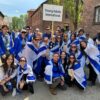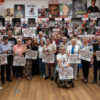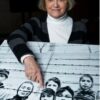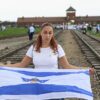-
Marching toward a world without genocide
“When you listen to a witness, you become a witness,” Elie Wiesel often said. Those words are the driving force behind the March of the Living, an event that…
Continue reading -
Project to Build Visual Memory of Places & People Before, During the Holocaust
The European Holocaust Research Infrastructure project convened 30 historians and researchers at Yad Vashem to provide tools to improve access to Holocaust documentation.
Continue reading -
A room in the ECB’s basement held thousands of Jews during the Holocaust
FRANKFURT – The European Central Bank’s new headquarters towers over the Main River in Frankfurt, a gleaming symbol of modern Europe. At its base stands…
Continue reading -
IN THEIR FOOTSTEPS follows the March of the Living
IN THEIR FOOTSTEPS follows the March of the Living This week W5’s Sandie Rinaldo joins a new generation confronting the…
Continue reading -
‘Second Generation’ leader tells of need to keep Shoah memory
One of the most prominent leaders of the children of Holocaust survivors has attacked people who attempt…
Continue reading -
-
Renny Rychter and John Glass discussed March of the Living
Renny Rychter and John Glass discussed March of the Living.
Continue reading -
U.S. begins paying out reparations from France to Holocaust survivors and their heirs
The State Department has paid or approved 90 claims for a total $11 million in reparations from France to former World War II prisoners who were carried to Nazi death…
Continue reading



